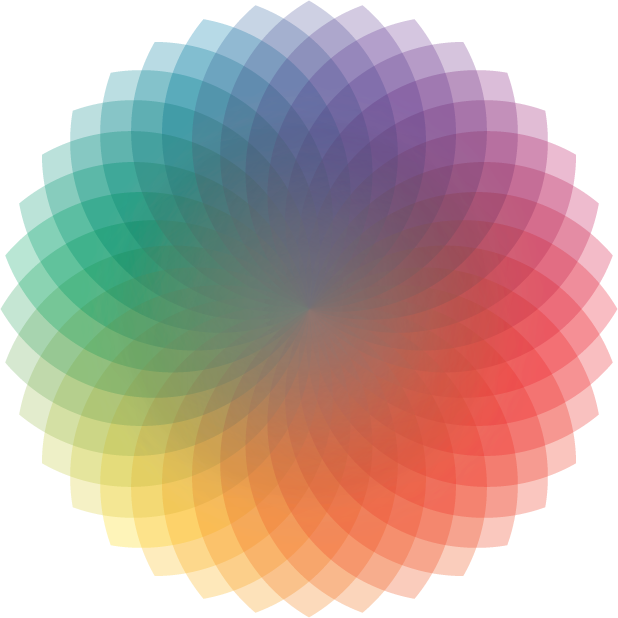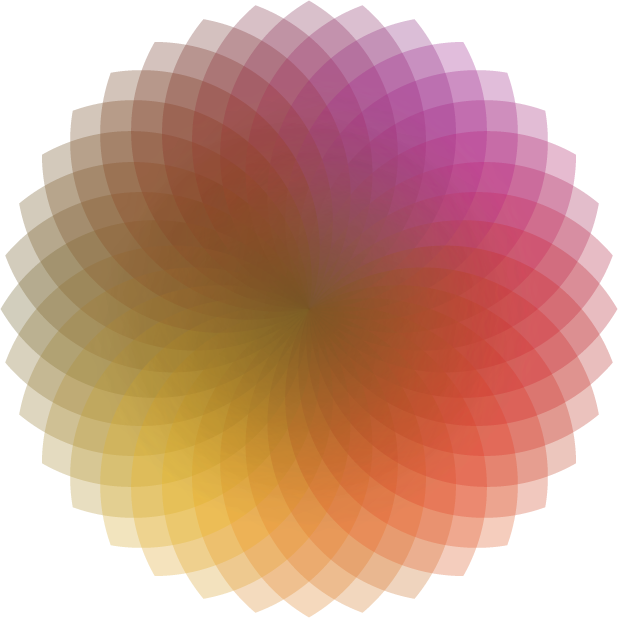Imaging
Imaging
The Dewey Color Imaging System is the only symmetrical imaging system identifying nature by mirroring global light refraction, and therefore has the functionality to digitize an indefinite number of natural phenomena.

Light Spectrum Colors

Earth Pigment Colors
Read about our wide range of practical applications in printing, fashion, sound, ultra sound, medicine, and chemistry.
Screen to Paper Precision Printing
Our printing system uses inexpensive, dye-based colors. It’s a desktop printing system with 8,000 to 10,000 digital images-bright greens, oranges, reds and browns. Instead of the 106 CMYK colors, experience 10,000+ Colors.
Request: We are looking for a partner to fine tune our software to a dye-based printer and support us in establishing worldwide patents.
Fashion Skin-Tone Enhancing Recommendations
Our 60,800 RGB/XYZ images recommend colors that enhance your skin tones. It divides the Hue Spectrum into 6 distinctive categories; African, North Asian, South Asian, Mediterranean, Northern European-Blue eyes, Northern European Brown Eyes.
This global skin-tone identification system is documented by
- Fashion Websites across the globe
- UV vs UVB Skin Tone Research
“Where your ancestors were 5,000 years ago established your skin undertones”
-Nina Jablonski
Our 6,680,000 Spectrum Engineering model uses RGBs as a spectrum measurement system. It connects all visible colors to all audible sounds to all known elements in the Periodic Table.
The periodic table’s elements RGBs were determined by:
• 3D x-ray crystallography and nuclear magnetic resonance (NMR) structures of proteins and nucleic acids*
• High-Resolution Refraction Pattern that produces a color.
• Measures distances between atoms on a macromolecular chain
PRACTICAL APPLICATIONS
The model has the potential to heal mental disorders, diseases, cancers, and DNA related illnesses with an algorithm. Instead of a “one size fits all” approach, doctors will have the ability to create customized prescriptions. Like the pharmaceutical industry, our goal is to let the body heal itself, by offering balancing compounds. View below the connective nature of our Color-Sound-Chemistry frequency-mapping model.
COLOR: 1:2 = Triad Combos- Most Harmonic
SOUND: 1:2 = The Major Chords-Most Harmonic
CHEMISTRY: 1:2 = Acidic Compounds- Most Harmonic
“Truth is Always Simple.”
-Leonardo da Vinci
GOALS
Medicine
Pharmaceutical Prescriptions: Body-Customized Pills
Use electronegativity angles to build compounds that balance body chemistry or DNA
Produce customized prescriptions on a 3-D printer
Mental Support
Sound Healing: Create Case Studies Prescribe ultrasound, levitation, & noise cancelation
Use balancing algorithms to stabilize brain waves
Clinical Healing
Color Biometrics: Clinically Test Patients
Use proven color test to identify obese adults & autistic children
Prescribe balancing sounds, medications & mental exercises
Request: Our on-going research project is currently looking to (1) improve the calculation of the compounds’ acidity/ basicity using a spectral curve and to (2) create an experiment to determine the feasibility of using a spectrum model.
Sound pitches and notes are just frequency vibration located within the sound spectrum.
They communicate directly with the molecules of the body. Sound does not go through the brain. And whether we call them 440 per second, A, or 3,729, B flat, the way we react to different combinations is complex and emotional and not totally understood.
The chords are capable of representing incredible varieties of emotions. The basic chords, the triads, we think are happy. The minor chords, we perceive as sad. But what’s astonishing is the actual difference between these two chords? It’s just these two notes in the middle. It’s either E natural, and 659 vibrations per second, or E flat, at 622.
“So the big difference between human happiness and sadness is only 37 freaking vibrations.”
-Tilson Thomas


